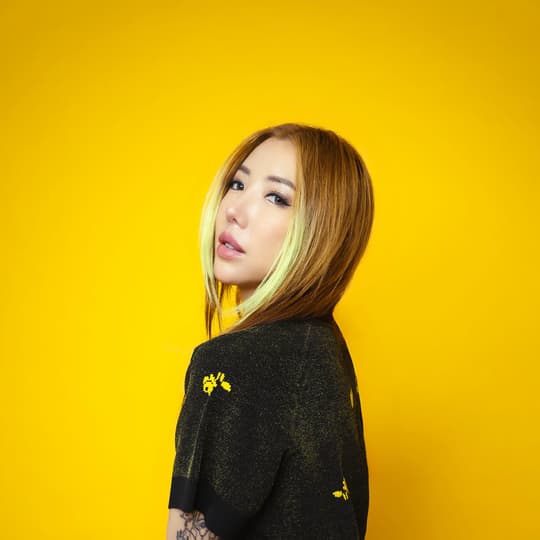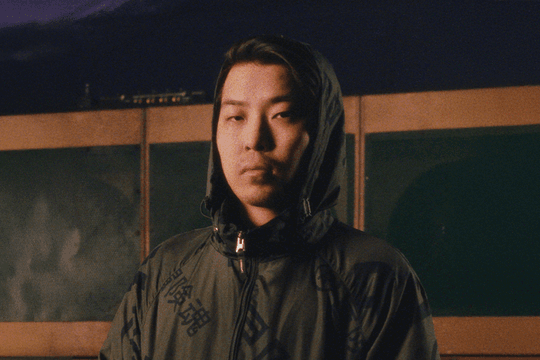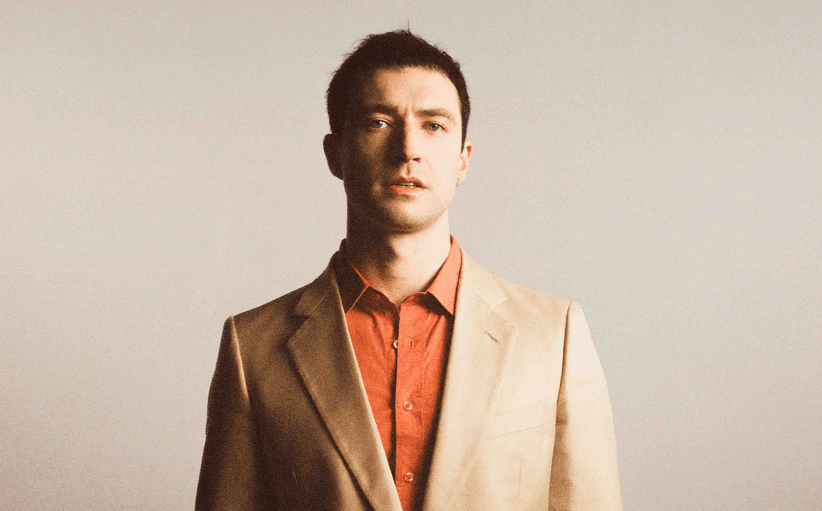The Dummy guide to K-pop
Slowly but surely, K-pop is opening up to western audiences. A sound built for Korean teenagers is now gaining attention from audiences of all ages and musical backgrounds, with Dummy favourite Grimes releasing the K-pop influenced track Phone Sex with pal Blood Diamonds, and Kanye West, Snoop Dogg and Will.i.am all reportedly lining up to work with K-pop artists such as 2NE1. It is also one of the most radical and popular digital artforms in the world.
Initially music created for an Asian demographic, K-pop, or Korean pop, is a wild hybrid of electronic, R&B, hip hop and trance. It’s pop music in its most potent state and, with its ultra-polished appearance and hyper-catchy melodies, it requires you to take everything you see and hear with a pinch of salt. But that’s part of the fun.
Maybe you’ve heard of the groups Super Junior, Teen Top, SHINee or 2NE1. You not have known that they are a part of a music industry that garnered over an estimated 200 million YouTube views last year. The manifestation of K-pop will be fascinating to watch over the next coming months and years. As many, from Monocle to In These Times have reported, K-pop is significantly tied to Korean politics and “soft power”.
The image the east Asian country presents is shifting from a corporate one with their electronics and car industry to, through its music and pop culture, one of an attractive, fascinating, glistening, and sometimes immaculate world, full of creativity beyond electronics. Korea is a country geographically very distant but increasingly approachable globally. As a result K-pop has been one gateway of completely educating and widening ones perspective of a country that in the past may have felt unfamiliar. Here is what you need to know about fascinating artform.
What is it?
Fun and imaginative, K-pop echoes some of what is missing in western pop music today. It’s sometimes robotic but has a cool and energetic edge, with its upbeat electro timbre and American R&B tints. The English lyrics somewhat lack in creativity, with its repetitive stance, but it’s simple, produces a very catchy hook and is redeemed through with its perfect packaging. And with an estimated retail value of over $93 million dollars, they must be doing something right.
Aesthetically, K-pop offers a new perfect-looking product geared towards mainly a young and female audience to consume. In high quantities, there lies a lucrative merchandising business with DVDs, CDs, lightsticks, photo books, and even socks across Asia and now the world. The distribution patterns shifted from local Korean websites in the form of CDs to, from late 2009, iTunes selling K-pop albums. This quicker digital approach made it more accessible across the world, and, from December 2011, HMV and even Tesco began to stock K-pop CDs after British fans petitioned retailers. This only illustrated the increasing demand for this entity in the UK and across the world.
The solo artists and groups are often formed through an audition process under a record company and, with artist development, produce a single and album to release to the world. A selection of the established K-pop stars are dressed to the nines in designers by Ashish, Balmain, Jeremy Scott, Cassette Playa, Chrome Hearts, and Givenchy amongst others. The music videos are to the highest quality with great emphasis on their slick dance routines, neon-candy colours pallette and close-ups to evoke a youthful and vibrant sparkle. The stage shows offer a more tangible glimpse into their perfect glistening exteriors with faultless, synchronized dance moves and live performances displaying an ultimate form of entertainment.
The history of K-pop as it known today is relatively short. It began in the 90s, when pop music began to flourish in Korea and its developing music industry recognizing a new teenager-focused audience demographic. With this in mind, groups like Seo Taiji & Boys, with their hip-hop influenced tracks like Nan Arayo (I Know) introduced a new genre of music to be adopted and adapted as an essential staple in the K-pop structure. Other notable artists like Leessang, Drunken Tiger, MC Sniper, and Jinusean helped strengthen that into the early 2000s and continue to today. The use of electro-driven sounds in K-pop first came to fruition with the emergence of Korea’s most esteemed boy-band of its time H.O.T, who with tracks like We Are The Future. With its euro-pop trance tone it initiated a sound that K-pop would be revisiting again and re-using in countless refined forms in the future.
The corporate structures
While it’s only reached international ears in the last couple of years, K-pop has played a fundamental role in Korea’s mainstream music industry since the early 90s. The majority of K-pop talent can be traced to one of three major companies: SM Entertainment, JYP Entertainment, and YG Entertainment. While there are other notable music corporations in Korea, these three continue to be the most influential. Interestingly, each of the three chairmen were once a singing artist themselves: SM Entertainment’s Lee Soo-man was a singer in the mid-seventies; Park Jin-young of JYP Entertainment was a solo singer (and still sings today); and Yang Hyun-suk of YG Entertainment was a member of Seo Taiji & Boys in the early 90s.
Some of the most notable past and present artists in each company include from SM: solo singer BoA, H.O.T, Super Junior, TVXQ, SHINee, Girls Generation and recently Exo.) Under the JYP roster artists include solo artist Rain,) who is now with his own company J.Tune Entertainment, Miss A, 2PM, and Wonder Girls, the latter being one of the first Korean groups to enter the US Billboard Hot 100. From YG Entertainment, the company credited for bringing hip-hop to a mainstream Korean audience, and holding some of the most sought-after talents with 1TYM from the late 90s, solo artist Se7en,) BIGBANG,) and 2NE1.
This structure not only forms a basis of how each company creates an identity for themselves and artists, but also demonstrates how K-pop is constructed and consumed. In the West, record agents represent artists, and it’s the record companies who produce the music. However in Korea their music is shaped, controlled and run by the entertainment agencies. Each company holds their own principles and distinct styles (for example SM Entertainment lead with dance-pop tracks whereas YG leans more towards a hip-hop/R&B feel) that are both individual, and most importantly, relevant and recognizable to its audience because it presents an ideal they both admire and aspire to. As a result, loyalty is built for particular companies, to the point where they hold concerts like SM Town or YG Concert. So not only are you just supporting its artists but you’re supporting the traditions and ideals the companies present to you. Can you imagine EMI doing this?
The social network spread
The uses of social media have effectively shown how music from all around the world, like K-pop, can be shared and provide a platform to steer their endeavours to go international. In the beginning stages of K-pop’s arrival, the use of social media to circulate its musical content was a very fan-lead movement. It has seen how integral the use of the Facebook, Twitter, and Youtube is to display a heightened reality full of cute, seductive, and skilful talents. Record companies set upofficial Youtube channels for their artists and companies to create a presence.
The utilisation of social media, especially Youtube, is shown in how they marketed BIGBANG’s latest album ‘Alive’. To begin with, they released teaser pictures of each band member every day on Naver – a Korean search engine that spread to Twitter, Facebook and other outlets. The next phase was the music teaser shown through a Naver app, but would slowly find its way on Youtube, where they’d release small clips of each new track on the album to get fans to anticipate what was still ahead: the music video. Via Facebook and Twitter, at a particular time (usually Midnight KST) the music video was released, shared, and most importantly, watched millions of times (BIGBANG’s Blue has been seen over 23 million times since February) ahead of the albums release. As a result, that slow build created a momentum not only in Korea but also around the world and displays the strength that K-pop possesses without a presence on TV.
K-pop’s darkside
There is, predictably, a darkside to all this perfect corporate surface. These issues run from its corporate development system, its backward sexual dynamics, and its racial insensitivity.
Similar to what stars experienced in Hollywood’s Golden Age, these pop stars go through a lengthy, strict star-making system, where the entertainment companies invest a lot of money and effort to nurture and promote artists to be of the highest standard. The pressures for a profit making result is plentiful, and with the industry’s focus to present a perfect package can often result in some trainees altering their appearance, the most extreme being with plastic surgery in a country where such procedures are the highest than in any other country. In other cases, there are abominable practices where some trainees are coerced into prostitution and are even victims of rape. In April Open World Entertainment CEO Jang Seok-woo was arrested for sexually harassing six female trainees (two underage) and even forcing other boy band members to join in. This scandal resulted in reform to regulate the industry and introduce measures to protect artists.
Another less-than-pleasant edge of the industry is the racist tone that is present in some entertainment shows. They can often represent ethnic minorities, specifically African-Americans, in a very stereotypical manner as thugs or robbers. There are also displays of very racist imagery like blackface, gollywog, and monkey-like dispositions. However this limited view doesn’t reflect everyone within the K-pop industry and Korean society, as for the most part African-American culture is embraced and respected so much in K-pop’s musical make-up. And yet its still a re-occurring issue that could potentially tarnish any efforts as K-pop continues to gain worldwide attention and establish an image. The renowned Korean- American hip-hop artist Drunken Tiger spoke out on the latest issue derived from a TV show where comedians were in black face, saying on AllKpop.com “I fully understand that the acts portrayed were not meant to intentionally defame nor antagonize black people, and such comic scenes appeared on many other comedic sketches on both network and cable TV. However, I think it’s time we should let the kids learn on what’s the right thing to do, and what’s wrong and what not to do. I think we should try to provide them with enough information and opportunities to change their minds regarding racial prejudices.”
After the Korean War and 1997 Asian financial crisis, the once poverty-stricken country transformed itself to become one of the most developed and competitive economies in Asia, with one of the most astonishing processes of urbanisation in human history. It’s still in a transition phase, with its old traditions challenged with the new future-like standpoint and image; and the homogenous and hierarchal society will have to develop its view and practices if it wants to be embraced by a global audience.
Cute Vs Sexy
One of the most interesting aspects of K-pop is how they present their ‘Idol’ groups, a term used to describe a mainstream K-pop artist or group. One of the most striking thing you will often notice is how there is a sexy and aegyo – cute in Korean. Both male and female stars are often marketed with a balance of approachable, pristine, and charming characteristics but always with an alluring quality. The qualities can be projected in a subtle or very apparent way, with the latter sometimes leading to harsh criticism in the countries conservative society, where thanks to the internet, the accessible large forum of discussion and disapproval can have a major influence on public opinion. For example a popular song by HyunA, a singer from girl group 4Minute divided opinions over her music video Bubble Pop. For western audiences, the video may not seem all that raunchy or gratuitous, but in Korea the promotion cycle was prematurely ended because the choreography and costumes were deemed as ‘too sexually suggestive’. The video still went on to garner over 10 million Youtube views across the world and was one of last summer’s biggest hits. But for the moment it seems like the cute form of marketing some of its artists will prevail, at least for now, with continuous efforts to push the envelope, so trying to strike a balance for its domestic and international audience is an evolving practice for K-pop’s new global stage. For male groups, they are celebrated and equally objectified but in a fairly tame manner. There is often great attention to their physique with terms like ‘chocolate abs’ being frequently used as a colloquial term to describe defined abdominal muscles that have a resemblance to subdivided parts of a chocolate bar, or to their ‘flower-boy’ image, an idiom to describe a more effeminate, young, and adorable-looking male.
It is also important to highlight other female artists like Lee Hyori , an ex-member of Idol girl group from the late 90s Fin.K.L., who was one of the first to uphold a provocative, at least for Korea, depiction of a female in her music and performances with songs like U-Go-Girl and Chitty-Chitty Bang-Bang. Popular girl groups Brown Eyed Girls and 2NE1, the latter with songs like I Don’t Care and I Am The Best execute a strong side of femininity and self-expression in K-pop that stems away from the common K-pop mould. They display to an audience their individuality and independence through their tough-looking accessories – spikes and chains, their non-suggestive strong dance choreography, and their added sexy but feisty attitude, which is a rarity in the K-pop girl group structure but now becoming a well received one.
The influence of Korean TV programmes
You cannot talk about K-pop without mentioning another component within the Korean entertainment industry that is their TV programmes. The Korean dramas, or K-dramas, have been an important vehicle for spreading, or at least instigating an initial interest in Korean culture. But its not just the Korean dramas, there is another category of TV programmes that showcase the music like “Music Bank,”: Inkigayo (meaning Popular Music in Romanised Korean) and M-Countdown.
They are essentially live music platforms similar to what we were used to experiencing in the UK with CD:UK and Top of The Pops, but far more elaborate sets, synchronized supportive chants from fans in the audience for a favourite artist, and very cool and stylish stage outfits. Fans across the world can watch, with live streams provided by the networks that as a result create a weekly online occasion, like a mini Premier League football match for pop music fans. You only have to check the trending topics on Twitter on an early Saturday morning from the UK to know that there are screams, albeit from a keyboard, of support for a particular artists. We view the groups live in all their glory and from what you see unfold; the proof is in the pudding. You only have to see a live performance from boy band SHINee who, with an already strong fan base in Korea that is increasing internationally, perform the single Sherlock, illustrating one the great strengths within K-pop. The artists can sing and dance, exceptionally well. It’s no joke.
How the western pop world is catching on
K-pop is, essentially, an Asian mode of expression with a western influenced sound. The music manages to delve into sounds we mostly associate with the West like pop, dance, house, R&B, and hip hop, which make the songs all the more familiar, but still possessing a distinct personality of their own. It’s a sound that is quickly gaining international attention from producers like Black Eyed Peas’ Will.i.am and Diplo who collaborated with duo GD&TOP of BIGBANG, Kanye West with trio JYJ, Teddy Riley of 90s RnB group Blackstreet fame, producing song The Boys for 9-member girl group Girls Generation and What is Love for boy band EXO. Other producers include German DJ Boys Noize, and LA-based producer Fuego on the track Lips in the latest ‘Touch’ album by Miss A.
It’s a list that looks to expand as the collaborations continue to compliment each other. Most recently Swizz Beatz announced he would like to work with K-pop artists saying, “The world is looking for something new and K-pop is a new trend. I want to play a part in making Korean music known worldwide.” But take into account the producing talent within Korea such as Yoo Young-jin who composes for several SM Entertainment artists, Park Jin-young of JYP writing many songs for his artists, in addition to Teddy Park, a former member of Hip-hop group 1TYM now producing many hits for 2NE1 and BIGBANG and other YG Entertainment artists. You only have to check out song ‘Bad Boy’ co-produced by Park, Choice 37, and BIGBANG member G-Dragon to see that there is a bustling and skillful style of talent there too. Interestingly, give the technological thrust of K-pop, Google is the most recent trend-jumper, holding a concert with Korean network MBC titled the ‘K-pop Wave Concert’ on May 21st in Los Angeles with notable acts TVXQ, Girls Generation, KARA, EXO, Super Junior, Beast, and many others.













